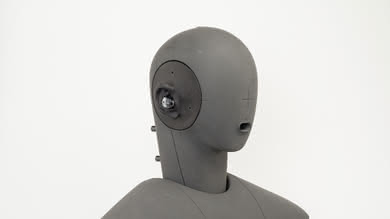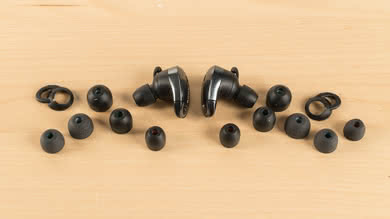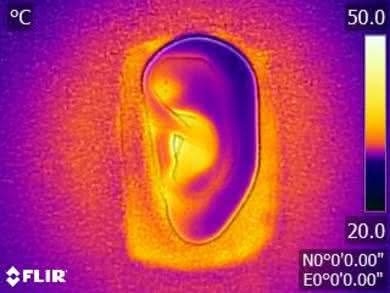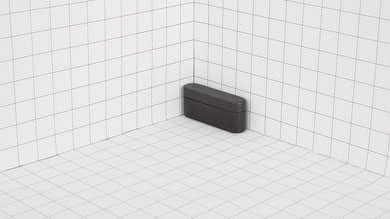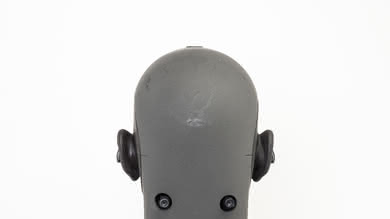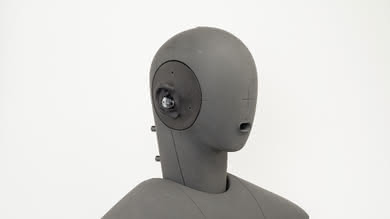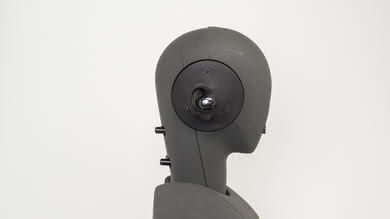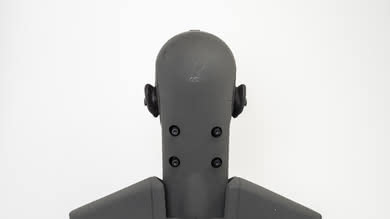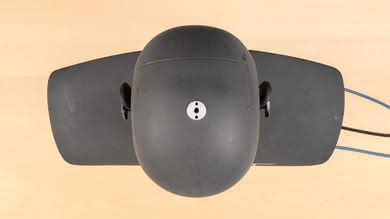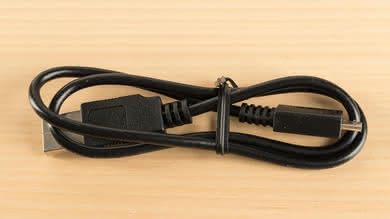The Sony WF-1000X Truly Wireless are decent mixed usage headphones with a few flaws. They have active noise cancelling and can block out a decent amount of noise around you. They have a high-end and durable design, they're stable enough for sports, and they sound decent. Unfortunately, they have one of the worse latency performances for any Bluetooth headset, and the right earbud would often drop connection regardless of range, which can be frustrating.
Our Verdict
The Sony WF-1000X are decent for mixed usage. They're good for sports and decently comfortable. They're one of the only truly wireless headphones with active noise cancellation, making them suitable for commuting. Unfortunately, they have an unreliable wireless connection which has a lot of latency. They won't be ideal for home theater and gaming but should be okay for most other uses.
- Compact and sturdy design.
- Stable fit for sports.
- Unreliable Bluetooth connection.
- High latency.
The Sony WF-1000X are decent for neutral sound. They have a decently well-balanced audio reproduction. They have a good amount of bass but can sound a bit boomy and slightly sharp due to the peak in the higher frequency range. They also don't have the best soundstage since they're closed-back in-ears.
The Sony WF-1000X are above-average for commute and travel. They have active noise cancelling, and they can block out a decent amount of ambient noise like the low rumble of bus and plane engines around you. Unfortunately, they don't have the best control scheme, and they have relatively short battery life.
The Sony WF1000X are good breathable and stable headphones for sports. They're compact, truly wireless, and come with a large variety of tips to help you find a comfortable fit that stays put while you exercise. Unfortunately, they have a poor control scheme and a spotty wireless connection.
The Sony WF-1000X are okay for office use. They block a good amount of ambient noise and don't leak much, meaning you can play your music at higher volumes. However, they have relatively short battery life and a fairly typical in-ear fit which might not be ideal for really long listening sessions.
The Sony WF-1000X are poor for gaming. They have very high latency, which is a deal-breaker for this use. They also have a sub-par microphone and aren't as customizable as most gaming-oriented headsets.
Changelog
- Updated Nov 21, 2019: Converted to Test Bench 1.3.1.
- Updated Nov 21, 2019: Converted to Test Bench 1.3.
- Updated Feb 27, 2018: Review published.
- Updated Feb 25, 2018: Our testers have started testing this product.
Check Price
Popular Headphones Comparisons
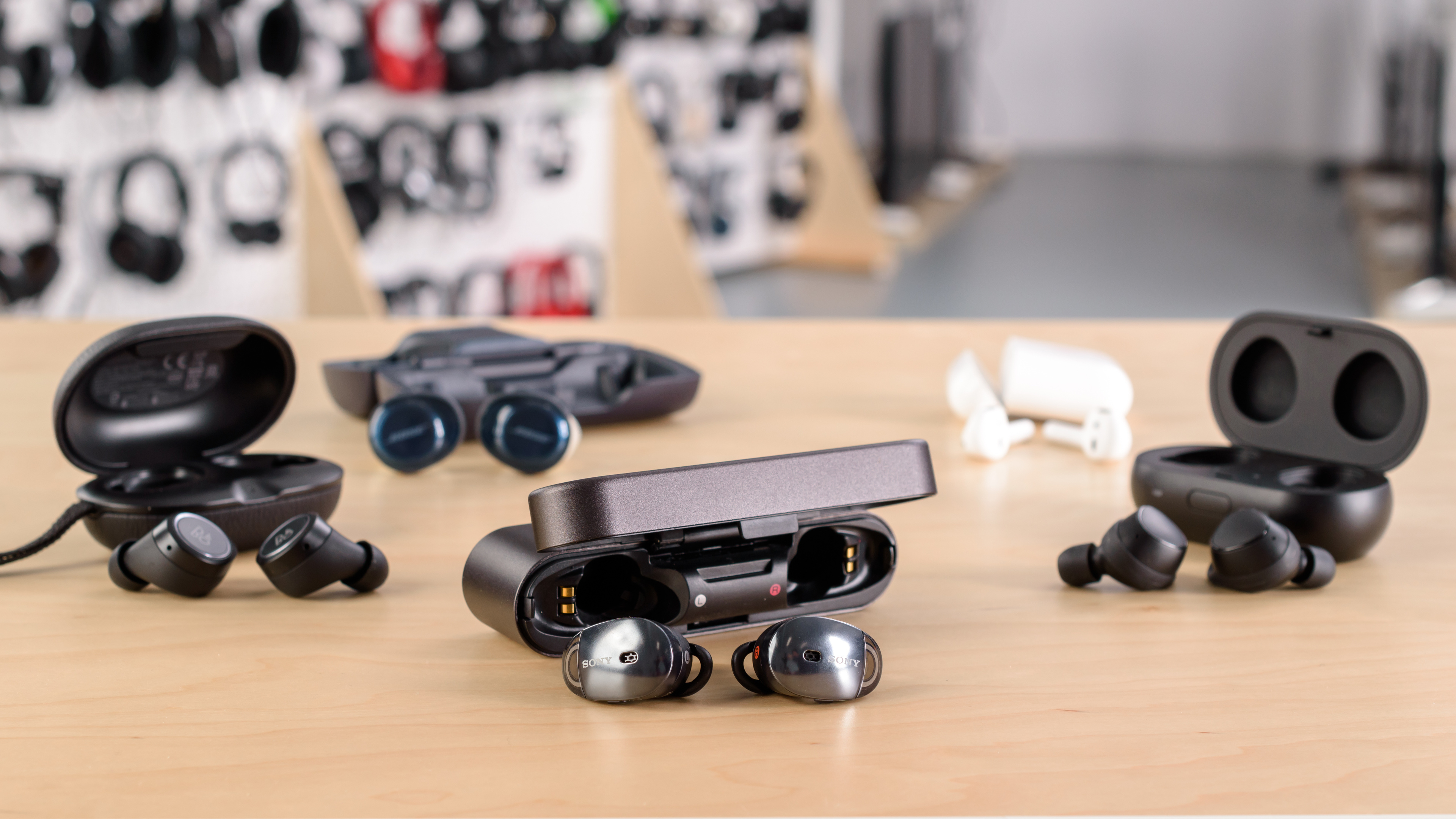
The Sony WF-1000X are great looking and well-built, truly wireless headphones with active noise cancellation, making them suitable for commuters. However, they have a relatively short battery life, a decently balanced but slightly sharp sound quality but a terrible latency performance, so your audio and visuals may fall out of sync.
See our recommendations for the best noise cancelling earbuds, the best noise cancelling headphones under $200, and the best earbuds with a mic.
The Sony WF-1000X Truly Wireless are better in-ear headphones than the Apple AirPods (1st generation), thanks to their closed-back design, which helps with noise isolation. The Sony audio quality is also better than that of the Apple. The Sony also support NFC for quick and easy pairing. On the other hand, the Apple have a comfortable fit for most, and their overall battery life is pretty impressive with about 24 hours. They also have noticeably better latency, which might even be lower with iOS devices. However, the Apple interface doesn't offer as much customization options like the Sony app.
The Bose QuietControl 30/QC30 Wireless are a much better wireless noise cancelling headset than the Sony WF-1000X Truly Wireless. The Bose have a more comfortable earbud fit, better noise isolation performance, better sound quality, and a longer battery life and wireless range than the Sony. They also have a better latency performance, although both headphones would not be the ideal choice for watching a lot of video content. On the upside, the Sony are a lot more compact than the Bose and will more easily fit into your pocket despite their fairly large charging case. The Sony also have a slightly more premium looking truly wireless design which some will prefer over the Bose even if their wireless connection is not as stable.
The Jaybird Run Truly Wireless are a slightly better truly wireless headset than the Sony WF-1000X Truly Wireless. The Jaybird have a more comfortable and stable fit for the gym than the Sonys. They also have a much more customizable sound that you can fully EQ, unlike the Sonys, which only have presets. The Jaybird also have a much better latency performance, although they won't be the best headphones for watching videos since their latency is also fairly high. On the upside, the WF-1000X have a better build quality and a more premium-looking design. They also come with a more portable and sturdy case that also supports NFC pairing. The Sony also isolate more in noisy conditions with their more typical in-ear fit and active noise cancellation, though their ANC is not that strong and should not be the defining feature for getting these headphones.
The Sony WF-1000X Truly Wireless are a slightly better truly wireless option than the Bose SoundSport Free Truly Wireless, but not by much. The Sony have an in-ear fit and isolate much better in noisy conditions which makes them a bit more versatile for commuting and different environments. The Sony also have a more polished and premium-looking design and come with a great case, but don't feel as durable as the Bose. The Sony, on the other hand, have a much better balanced sound quality that does not need an EQ for most listeners. The Bose also have a more comfortable earbud fit that you can wear much longer than the Sony. The Bose's open fit is also a bit more suitable for outdoor runners since it lets you monitor your environment for traffic and obstacles, but also blocks a lot less ambient noise.
Test Results
The Sony WF-1000X have a premium design that looks and feels high-end. The earbuds have a good blend of high-quality plastic and metal with a transparent tip that shows the antenna and lights up when in pairing mode. The case also has an elegant metal finish that feels durable and looks a lot more appealing than some of the other truly wireless designs like the Jaybird Run Truly Wireless or the Bose SoundSport Free Truly Wireless. Unfortunately, the earbuds do stick out a bit once in your ear, which may not be the ideal look for some listeners.
The Sony WF1000X have a pretty typical in-ear fit, but thanks to a wide range of tips provided in the box, they're decently comfortable. They come with seven tip sizes, including foam tips. The earbuds are relatively lightweight, and since they're truly wireless, there is no cable pulling on the buds, making them less noticeable once in your ears. Since they're in-ears, they put a bit of pressure within your ear canal, which may not be as comfortable. The tips also aren't angled like the Jaybird Run Truly Wireless, making them slightly less comfortable.
These earbuds have a mediocre control scheme with no volume control. They provide two buttons, one to end calls and pause tracks and another to cycle through noise cancelling modes. The buttons themselves are pretty clicky and have good feedback. However, the lack of functionality forces you to use your phone to turn up the volume or even change tracks, which is a little disappointing.
The Sony WF1000X are very breathable, truly wireless headphones. Their compact in-ear design does not cause any significant temperature increase when exercising or working out. They trap a little heat in the ear canal, but since they don't cover the ears like on/over-ear headphones, they won't make you sweat more than usual, even during more intense workout routines.
The Sony WF-1000X headphones, like most truly wireless designs, are very compact and highly portable. They will easily fit into almost any pocket, and they're a lot smaller than the Bose SoundSport Free Truly Wireless. Their charging case is pretty bulky. However, it's flat and won't be as noticeable in your pocket as the Jaybird Run Truly Wireless or even the Bose SoundSport Free Truly Wireless.
These headphones come with a flat metal hard case that will easily protect the earbuds from impacts and drops, and even mild water damage. However, the case does add a bit of bulk. But on the upside, since it's flat, it won't stick out in your pocket, and it's a bit more convenient to carry around than the Bose SoundSport Free Truly Wireless and the Jaybird Run Truly Wireless.
The Sony WF-1000X have a great build quality that feels and looks premium. The earbuds have a metal backplate that adds to the high-end appeal of the headphones and makes them a bit more durable. The buds feel dense enough that they won't break from a couple of accidental drops, and the case is also a sleek metal build that feels sturdy and protects the headphones fairly well. The lid has a slight lift mechanism that may cause concern due to wear and tear over time. Overall, the build quality feels superior to the Jaybird Run. They would be as good as the Apple AirPods (1st generation) Truly Wireless if the case and buds were a little more compact while keeping the level of premium design and build quality.
The Sony WF-1000X have a stable in-ear fit that goes fairly deep into the ear canal. That, combined with the multiple tip sizes and the truly wireless design, make them pretty good for working out as they will rarely move around once in your ears. They only have one set of stability fins for listeners with slightly larger ears which is not ideal but also not necessary in most conditions, unlike the angled earbuds of the Jaybird Run Truly Wireless, which fit a little looser.
The frequency response consistency is outstanding. Assuming the user can achieve a proper fit and an air-tight seal using the assortment of tips that come with the headphones, they should be getting a consistent bass and treble delivery with each re-seat.
These in-ears have excellent bass. Their LFE (low-frequency extension) is at 10Hz, which is excellent. But low-bass is underemphasized by about 2dB. This means they can produce low thumps and rumbles, but at a slightly lower level than our reference. Mid-bass, which is important for the punch of bass and kick instruments, is virtually flat and flawless. High-bass, however, shows a 3dB bump which could add a bit of boominess to the sound. Overall, the bass of the Sony is deep and well-extended, but a bit light on sub-bass and a bit boomy sounding.
The Sony WF-1000X's mid-range is great. Low-bass shows about 3dB of overemphasis, which is the continuation of the high-bass bump. This makes the body of vocals and lead instruments a bit thick. Mid-mid and high-mid are flat but rather uneven. Overall, the mid-range of the Sony is a bit muddy and cluttered sounding.
The Sony WF-1000X have a very good treble. Low-treble is flat and within 0.5dB of our target, which is excellent. However, there is a 12dB bump around 10KHz, which makes the sound of these headphones noticeably sibilant. Overall, their treble is well-balanced and detailed but could sound sharp and piercing on S and T sounds.
The Sony WF1000X's imaging is outstanding. Their weighted group delay is 0.09, which is among the lowest we have measured. The graph also shows that the entire response is below our audibility threshold. This ensures a tight bass and transparent treble reproduction. Also, the L/R drivers of our unit were very well-matched. This indicates accurate localization and placement of objects (voices, footsteps, instruments) in the stereo field.
The soundstage of these in-ears, like most other headphones, are poor. Since creating a large and out-of-head soundstage is dependent on a good pinna (outer ear) activation, in-ears like these end up with a small and inside-the-head soundstage. Also, because of their closed-back design, their soundstage won't feel as open as open-back earbuds like the Apple AirPods (1st generation) Truly Wireless.
The noise isolation performance of the Sony WF-1000X is decent. In the bass range, where the rumble of airplane and bus engines sit, the total isolation is about 9dB, which is decent. But some other in-ears like the JBL Free Truly Wireless 2018, Jaybird X3 Wireless, Jaybird Run Wireless, and Beats BeatsX Wireless achieve similar results with passive noise isolation. In the mid-range, which is important for cancelling out speech, the Sony achieves a good 22dB of isolation. In the treble range, where sharp and S and T sounds sit, they isolate by more than 30dB, which is good. It also seems that the ANC system hurts the passive isolation of the headphones in the treble range, especially around 3KHz.
The Sony WF-1000X's leakage performance is great. Like most other closed-back in-ears, a significant portion of the leakage is a narrow range in the treble section. The level of the leakage is quiet as well. This makes the leakage of these headphones barely audible, even at loud volumes.
The integrated microphone's performance is sub-par. Speech recorded/transmitted with the mic of the Sony will sound relatively thin and quite muffled. This could make the speech a bit difficult to understand. They also struggle in noisy situations and may have difficulty separating speech from ambient noise even in moderately loud environments, such as a busy street.
Disappointing recording quality. LFE (low-frequency extension) is at 240Hz, indicating a thin sound. The HFE (high-frequency extension) of 1.7KHz means that speech recorded/transmitted with the mic of the Sony WF-1000X will sound muffled and lacking presence. This will hurt the intelligibility of recorded/transmitted speech.
The noise handling capabilities of the Sony WF1000X's mic is mediocre. In our test, they achieved a speech-to-noise ratio of 12dB, which is mediocre. This means that this microphone is only suitable for quiet environments and may struggle to isolate speech from noise even in moderately loud environments.
The Sony WF1000X have a disappointing battery performance. They have less than three hours of continuous playtime, especially when using the active noise cancelling feature with adaptive sound enabled. On the upside, the charging case has two additional charges totaling nine hours of battery life if you take breaks. This should be decent enough to last you through the day but won't be ideal for more heavy users with long listening sessions.
These in-ears support the Sony | Headphones Connect app, which gives them more control over their active features and more customization options than some of the other truly wireless designs. The app is easy-to-use and provides adaptive sound profiles for when you're walking or standing still as well as different noise cancelling options. You also get EQ presets, but unfortunately, it's not a parametric equalizer. You can't make your own custom EQs, and there are no room effects which is why the app has a slightly lower score for these headphones.
These in-ears only connect to other devices via Bluetooth. They don't have simultaneous multi-devices pairing but remember the last sync device for auto-pairing when you open the charging case. They also support NFC, which makes pairing with smartphones easier, especially for a truly wireless design.
The Sony WF1000X have very high latency. This makes them considerably worse for watching movies and gaming than most typical Bluetooth headphones.
The Sony WF-1000X don't have an audio cable or a wired connection. If you want a decent sounding and stable in-ear with a wired connection, we suggest the Sony MDR-XB50AP Extra Bass or the 1More Triple Driver.
These in-ears come with a charging case that delivers up to six additional hours of battery life. However, it has no inputs but does have the NFC tag, which allows you to pair the headphones easier with smartphones and other NFC-ready Bluetooth devices.

